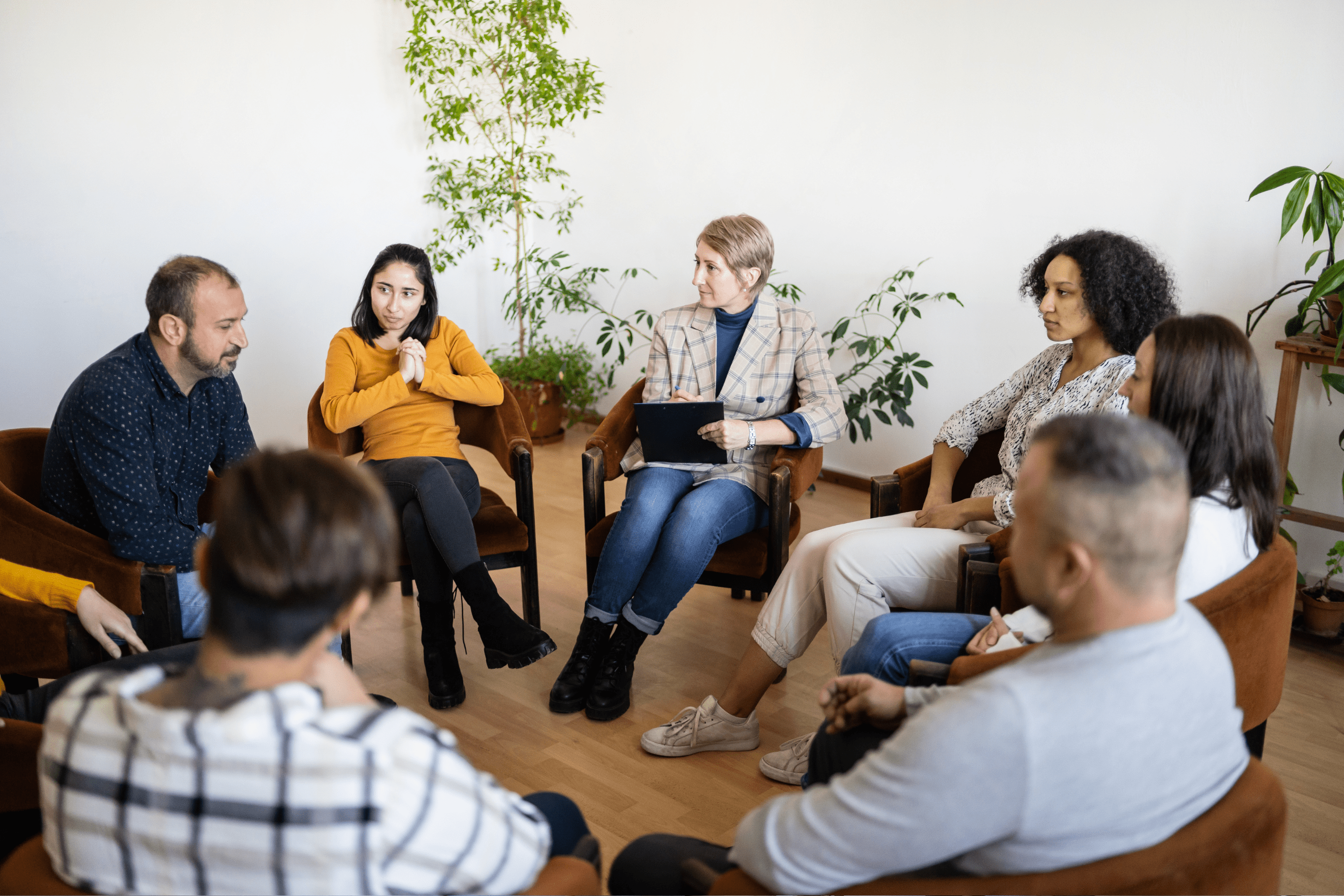Introduction
Ever felt like you're navigating life all on your own? It's a tough feeling, right? But what if we told you that you don't have to do it alone? Enter the power of community. Communities are more than just groups of people; they're the backbone of emotional support, shared wisdom, and unending inspiration.
The Definition of Community

What Constitutes a Community?
At its core, a community is a group of individuals who share common interests, values, or goals. It's a space where people come together to support each other, share resources, and grow collectively. Communities can be based on various factors such as geography, profession, hobbies, or even shared experiences.
Different Types of Communities
Communities come in all shapes and sizes. There are local communities, where neighbors come together to create a supportive environment. Then there are online communities, which have exploded in popularity, connecting people across the globe with similar interests or challenges. Professional communities bring people from the same industry together, while social communities focus on shared hobbies or causes.
The Benefits of Being Part of a Community
Emotional Support
Being part of a community means you have a built-in support system. When you're feeling down, stressed, or overwhelmed, our community can lift you up, providing comfort and understanding that only those who care about you can offer.
Shared Resources and Knowledge
Ever heard the saying, "Two heads are better than one"? Communities embody this concept by pooling resources and knowledge. Whether it's sharing tips on gardening, providing professional advice, or swapping recipes, the collective intelligence of a community is a powerful resource.
Increased Motivation and Accountability
When you're part of a community, you're more likely to stay motivated and accountable. Whether it's sticking to a fitness routine, pursuing a career goal, or maintaining a hobby, the encouragement and accountability from your community can be the push we need to keep going.
How Community Provides Emotional Support
The Role of Empathy and Understanding
Empathy is the cornerstone of emotional support. In a community, people understand and share our feelings. They’ve been there, done that, and can offer a shoulder to cry on or a word of encouragement when you need it most.
Real-life Examples of Community Support
Take the story of Jane, who joined a local book club after moving to a new city. Initially shy and reserved, she found friends who shared her love of literature. Over time, these friends became her support system, helping her navigate the challenges of her new life with empathy and understanding.
Shared Resources and Knowledge in a Community
Pooling Resources for Mutual Benefit
Imagine having access to a treasure trove of resources simply by being part of a community. Whether it's borrowing tools, sharing childcare, or exchanging skills, communities enable resource pooling that benefits everyone involved.
Knowledge Sharing and Skill Development
Communities are fantastic for learning and growing. Think of a tech community where members share coding tips, or a cooking group exchanging recipes. The shared knowledge within a community helps individuals develop new skills and expand their horizons.
Motivation and Accountability Through Community
How Communities Drive Personal Growth
Communities can be the catalyst for personal growth. They challenge you to step out of our comfort zone, try new things, and strive for better. The support and encouragement from community members can help you achieve goals you never thought possible.
Success Stories Fueled by Community Support
Consider the story of Mark, who struggled with his weight for years. After joining a local fitness group, he found the motivation and accountability he needed. The community's support helped him lose weight and gain confidence, proving that collective encouragement can lead to individual success.
Building Strong Connections in a Community

Steps to Create Meaningful Relationships
Building strong connections requires effort and openness. Start by participating actively, showing genuine interest in others, and offering help when needed. Be yourself and let others get to know the real you.
The Importance of Trust and Communication
Trust and communication are the bedrock of any community. Open, honest communication fosters trust, making it easier to form strong, lasting relationships. Be transparent and respectful in our interactions to build a solid foundation of trust.
Online Communities: Connecting in the Digital Age
The Rise of Online Communities
The internet has revolutionized the way we connect. Online communities have sprung up around every conceivable interest, providing a space for people to connect, share, and support each other without geographical constraints.
Benefits and Challenges of Virtual Connections
While online communities offer immense benefits, such as accessibility and diversity, they also come with challenges like the lack of physical interaction and potential for miscommunication. Balancing virtual and real-world interactions can help mitigate these challenges.
Local Communities: The Heartbeat of Society

The Importance of Local Engagement
Local communities are the heartbeat of society. Engaging locally helps create a sense of belonging and fosters social cohesion. It's about knowing our neighbors, participating in local events, and contributing to the well-being of our immediate surroundings.
Examples of Thriving Local Communities
Look at the vibrant community of Greenfield, where residents organize regular clean-up drives, local markets, and cultural events. This engagement not only beautifies their neighborhood but also strengthens the bonds between residents.
How to Find the Right Community for You
Identifying Your Interests and Needs
Start by reflecting on our interests and needs. What are you passionate about? What support are you looking for? Identifying these factors will help you find a community that resonates with you.
Evaluating Community Fit
Once you’ve identified potential communities, attend a few meetings or events. Pay attention to the dynamics and see if they align with your values and interests. Finding the right fit is crucial for long-term satisfaction and engagement.
Nurturing and Sustaining Community Relationships
Best Practices for Maintaining Connections
Nurturing community relationships requires ongoing effort. Regular communication, participation in events, and showing appreciation for others’ contributions are essential. Be proactive in reaching out and staying connected.
Dealing with Conflicts and Disagreements
Conflicts are inevitable in any community. Address them with empathy and open communication. Listen to all perspectives, seek common ground, and work towards solutions that respect everyone’s feelings and needs.
The Role of Community Leaders

Characteristics of Effective Community Leaders
Effective community leaders are empathetic, communicative, and inclusive. They inspire trust, motivate others, and navigate challenges with grace. Their leadership is crucial in guiding the community towards its goals.
Inspiring Leadership Examples
Consider Anna, a community leader who transformed her neighborhood by organizing regular activities and fostering a spirit of inclusiveness. Her leadership not only brought people together but also improved the overall quality of life in the community.
The Impact of Community on Mental Health
How Community Involvement Enhances Well-being
Being part of a community can significantly enhance our mental health. The sense of belonging, support, and shared purpose reduces feelings of loneliness and depression, contributing to overall well-being.
Research Findings on Community and Mental Health
Research consistently shows that people engaged in community activities report higher levels of happiness and lower levels of stress. The positive impact on mental health underscores the importance of community involvement.
Overcoming Isolation: The First Step Towards Community
Strategies to Break Out of Isolation
Breaking out of isolation starts with small steps. Join local groups, attend community events, or engage in online forums. Start by reaching out to one person at a time and gradually build your network.
Personal Stories of Overcoming Loneliness
Consider Tom, who felt isolated after retiring. By joining a local hiking group, he not only stayed active but also made new friends who shared his love for the outdoors. His story is a testament to the transformative power of community.
Conclusion
The power of community is undeniable. It's where you find support, share knowledge, and draw inspiration. Whether through local groups or online networks, communities enrich your lives in countless ways. So, take that first step, reach out, and immerse yourself in the warmth and strength of a community.
SHARE THIS
COMMENTS
Our mission is to guide individuals, teams, and organizations on transformative journeys of self-awareness and emotional intelligence. Through science-backed assessments, actionable insights, and tailored strategies, we empower people to unlock their potential, strengthen relationships, and achieve authentic success in both personal and professional life.
CONTACT INFO
@2025 Mindarts | All Rights Reserved
Terms & Conditions | Privacy Policy | Cookie Policy | Impressum
CONTACT INFO
@2025 Mindarts | All Rights Reserved
Terms & Conditions | Privacy Policy | Cookie Policy | Impressum


